#achatinidae
Text
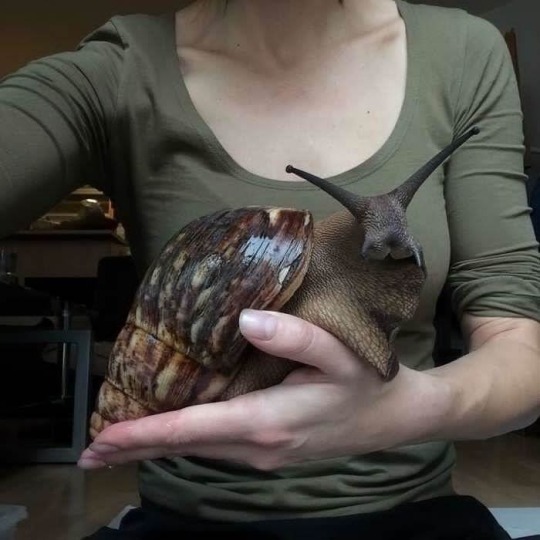
Giant African Land Snail
#giant african land snail#land snail#snails#snail#upload#fav#green#hands#nature#animals#Lissachatina fulica#Achatinidae#Mollusca#gastropoda#gastropods#land snails
3K notes
·
View notes
Text
Uncharismatic Fact of the Day
For the giant African snail, size really does matter! When two snails decide to mate, the larger (typically older) snail takes on the role of female and accepts sperm from the smaller snail. If both snails are the same size, they will both exchange sperm. Each one may immediately go on to fertilize their eggs, or store the sperm for up to two years!

(Image: Adult, juvenile, and eggs of the giant African snail (Lissachatina fulica) by Ronal Azuero)
If you like what I do, consider leaving a tip or buying me a ko-fi!
#giant African snail#Stylommatophora#Achatinidae#land snails#snails#gastropods#mollusks#invertebrates#uncharismatic facts
101 notes
·
View notes
Text

stopping to smell the flowers !
#snail#giant african land snail#giant snail#gastropod#invert#gals#snails#cottagecore#snailcore#dirtcore#naturecore#goblincore#stumpcore#petblr#achatinidae#mollusk#snailsoftumblr#land snail#lissachatina fulica#achatina fulica
159 notes
·
View notes
Photo






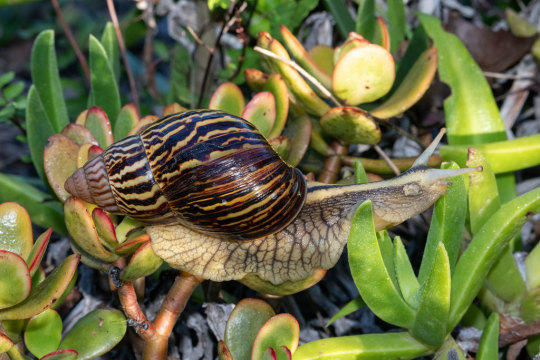

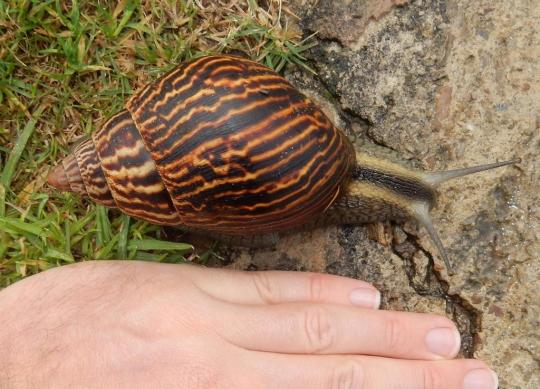

Zebra agate snail, Cochlitoma zebra, Achatinidae (giant land snails)
Found in southern Africa
Photo 1 by adamwelz, 2 by gareth_bain, 3 by muisvoel, 4-5 by imarkrige, 6-7 by garethyearsley, 8 by phoekman, and 9-10 by henrydelange
#animals#curators on tumblr#bugs#gastropods#snail#land snail#giant land snail#zebra agate snail#one nice bug
1K notes
·
View notes
Text
Ancient humans may have cooked and eaten snails 170,000 years ago#Ancient #humans #cooked #eaten #snails #years
A shell from a snail in the family Achatinidae, similar to those thought to have been cooked at Border Cave in South Africa
Marine Wojcieszak
Broken bits of shells found in a cave in South Africa have given researchers the earliest evidence for prehistoric people roasting and eating snails.
Other studies have pointed to snail consumption at sites in Europe around 30,000 years ago and in Africa…
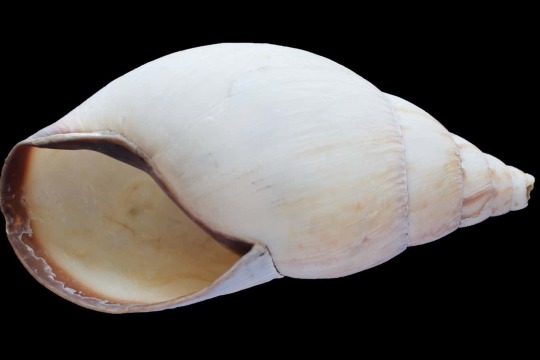
View On WordPress
0 notes
Text
Con gì mồm bò mà không phải mồm bò mà mồm lại bò là con gì
Con gì mồm bò mà không phải mồm bò mà mồm lại bò là con gì, con gì mà bò bằng mồm là con gì, con gì không đi bằng chân mà đi bằng mồm là con gì? Cùng Doanphuongkimlien trả lời câu đố này và tìm hiểu về con bò bằng mồm này nhé.
Con gì mồm bò mà không phải mồm bò mà bò bằng mồm là con gì?
Loài mồm bò mà không phải mồm bò là con ốc sên, ốc sên ma hay còn gọi là ốc ma là loài động vật thân mềm sống trên cạn, tên khoa học là Achatina fulica thuộc họ Achatinidae.
Ốc sên là gì?
Ốc sên là một loài động vật nhỏ, có đặc điểm thân dài, mềm, không có chân, vỏ to hình xoắn ốc. Ốc sên được biết đến với việc di chuyển siêu chậm và nhai cây cối trong vườn.
Môi trường sống của Ốc sên là gì?
Môi trường sống của ốc sên là bất cứ nơi nào ốc sên sinh sống và phát triển . Ốc sên đã làm cho môi trường sống của chúng hầu như ở khắp mọi nơi trên thế giới, kể cả khu vườn của chính bạn.
Ốc Sên
Ốc sên đã tạo ra môi trường sống của chúng trên khắp thế giới, bao gồm cả các đại dương ở Bắc Cực và Nam Cực! Chúng thích nghi với môi trường sống nên có rất nhiều loại ốc khác nhau với môi trường sống khác nhau. Ốc sên trên cạn là loài ốc phổ biến nhất, nhưng thậm chí có một số loài đã thích nghi để sống trong nước. Chỉ riêng ở Bắc Mỹ, có hơn 500 loài ốc sên khác nhau.
Các loại môi trường sống khác nhau của ốc sên
Ốc vườn
Ốc trong vườn, hay Helix aspersa , là loại ốc bạn sẽ tìm thấy chúng gặm lá và để lại những đường mòn trong vườn của bạn. Mặc dù có nguồn gốc từ Địa Trung Hải, nhưng môi trường sống của loài ốc sên này ở khắp nơi trên thế giới, bao gồm cả ở Anh, Tây Âu, Bắc Phi (Ai Cập) và Trung Đông (Thổ Nhĩ Kỳ). Nó cũng có thể được tìm thấy ở Úc, New Zealand, Haiti, Mexico, Chile, Argentina, Nam Phi và các đảo ở Đại Tây Dương.
Du khách thế giới này thường đến những nơi xa và rộng này bằng cách ẩn náu trong các sản phẩm thực vật hoặc rau quả! Bây giờ, nó thích khí hậu ôn hòa (ôn hòa) và thường sống trong vườn, rừng, đồng cỏ, đất nông nghiệp hoặc bất cứ nơi nào có cây xanh và thảm thực vật.
Ốc đất Châu Phi khổng lồ
Đúng như tên gọi của nó, Ốc đất khổng lồ châu Phi là một trong những loài ốc lớn nhất trên thế giới. Chúng có vỏ màu nâu nhạt đến sẫm với các sọc sẫm hơn trên chúng.
Loài ốc sên này có nguồn gốc từ một số quốc gia châu Phi, bao gồm Mozambique, Kenya và Somalia, nhưng nó cũng được đưa đến các khu vực khác nhau trên thế giới, nơi nó được xếp vào loại xâm lấn . Bây giờ, nó sống trên tất cả các lục địa, ngoại trừ Nam Cực!
Vì nó có nguồn gốc từ châu Phi, không có gì ngạc nhiên khi loài ốc sên này thích khí hậu nóng ẩm. Nó thường sống ở ven rừng nhưng cũng được tìm thấy ở các bờ sông và suối, vùng cây bụi, vườn, đất ngập nước và thậm chí ở một số khu vực đô thị.
Để giúp chúng tồn tại trong điều kiện nóng ẩm, loài ốc sên này đã thích nghi. Khi khan hiếm nước, nó sẽ đóng thân vào vỏ để bảo quản nước . Nó cũng sử dụng lớp vỏ lớn của mình để bảo vệ mình khỏi những kẻ săn mồi.
Ốc Sên
Ốc La Mã
Ốc sên La Mã là một loài ốc sên trên cạn và là một trong những loài ốc sên phân bố rộng rãi nhất. Chúng sống khắp Châu Âu và đã được vận chuyển đến Châu Á, Châu Phi, Châu Đại Dương và Châu Mỹ.
Loài ốc này thích những nơi có ít ánh sáng mặt trời, nhiệt độ ôn hòa và độ ẩm cao . Nó thường tạo ra môi trường sống ở độ cao 2000 mét so với mực nước biển và thích nghi với nhiều khu vực khác nhau. Chúng thích sống trong các khu rừng ôn đới, vườn nho, bụi rậm và hàng rào nơi có mưa và nhiệt độ ôn hòa.
Chúng cũng đã thích nghi với những khu vực có nhiệt độ thấp hơn. Trong những tháng lạnh hơn trong năm, chúng bước vào một kiểu ngủ đông . Chúng đào một cái lỗ trên mặt đất và chui vào vỏ của chúng, sau đó chặn lối vào bằng một lớp chất nhầy. Điều này giúp duy trì nhiệt độ cơ thể của chúng và bảo vệ chúng khỏi bất kỳ động vật ăn thịt nào.
0 notes
Photo
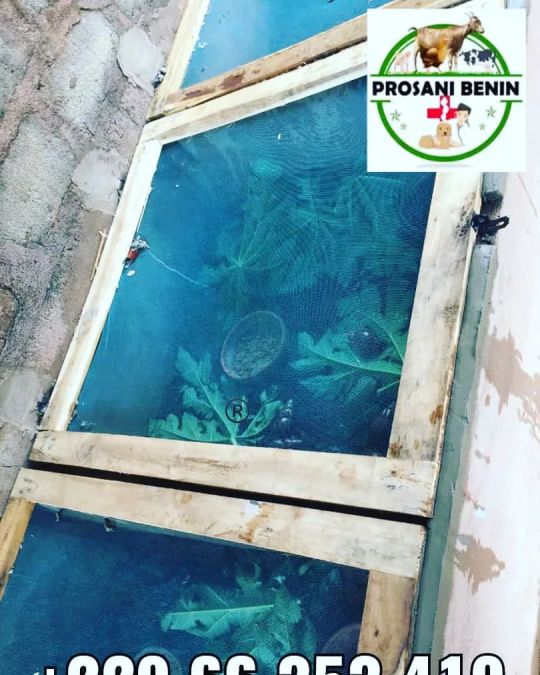
💚💛❤️ L'achatiniculture ou élevage d'escargots, désigne l'élevage d'escargots de la famille des Achatinidae (il s'agit d'une branche de l'héliciculture). Une personne qui pratique cette activité est un achatiniculteur. Les espèces élevées sont Achatina Marginata, Achatina achatina et Achatina fulica. L'achatiniculture a pour objet principal la production de viande à destination de l'alimentation humaine. Cet élevage se pratique surtout en Afrique de l'Ouest. Pour une meilleure expertise en achatiniculture, contactez PROSANI BENIN +229 66353419 https://wa.me/message/IR5UQ4S3CXJHI1 ```Toujours à votre écoute pour mieux vous servir...®️🦅``` https://www.instagram.com/p/CdYJVgZK3FN/?igshid=NGJjMDIxMWI=
0 notes
Text

The creation of the snail
#lissachatina fulica#achatina#achatina fulica#lissachatina#snail#gals#giant african land snail#invertebrates#snails#invertblr#inverts#achatinidae#pets#pet snails#african land snail
58 notes
·
View notes
Text

Here’s a small cc drop to celebrate the release of Cottage Living. Also, my late pride drop... Sorry. Hope you enjoy. ☜(˚▽˚)☞

Show Your Pride Painting
Subtle pride flags as some base game paintings. I sadly couldn’t add all pride flags - it would never end - but I did try to add a variety. Download beneath the cut.

Achatinidae Statue
A medium sized base game snail statue. Decorate your garden with a shiny metal snail. Download beneath the cut.

Helicidae Statue
A small sized base game snail statue. Essentially the Achatinidae Statue, but smaller. Download beneath the cut.
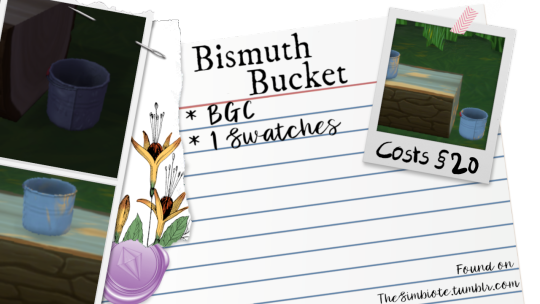
Bismuth Bucket
Tis a base game compatible bucket. Download beneath the cut.

Copper Placements
A base game compatible plant pot, but instead of ceramic or wood, it’s a copper pot. :p Download beneath the cut.
Downloads
Show Your Pride Paintings
Mediafire (no adfly)
Simfileshare (no adfly)
Achatinidae Statue
Mediafire (no adfly)
Simfileshare (no adfly)
Helicidae Statue
Mediafire (no adfly)
Simfileshare (no adfly)
Bismuth Bucket
Mediafire (no adfly)
Simfileshare (no adfly)
Copper Placements
Mediafire (no adfly)
Simfileshare (no adfly)
17 notes
·
View notes
Text
The Largest Snail I Have Ever Seen
An inquiry came in (with the subject line: urgent snail question) asking, “How big is the biggest snail you've ever seen?” Thinking that others might be interested, here is my answer.
The largest snail? There could be many ways of answering that question. Size could refer to length, diameter, volume, or mass. The longest mollusk I have seen is the giant squid on display at the Smithsonian, but that is a cephalopod, not a snail, and it doesn’t have a shell. The largest shell I have seen is a fossil ammonite that was more than 2 meters in diameter, but that is also a cephalopod, not a snail, and maybe fossils are not acceptable for this answer.
The largest modern shell I have seen is that of a giant clam, but that is a bivalve, not a snail. The largest bona fide snail I have seen could be the snail in the Dr. Dolittle movie that carried Dr. Dolittle under the sea, but movies don’t always depict reality (sorry), so maybe that one doesn’t count. Another large snail I read about is a fossil sea snail from the Eocene Epoch (34-56 million years ago) called Campanile giganteum, which grew up to 1 meter long (Houbrick, 1984). But I haven’t actually seen one, which is really what you asked, and maybe you don’t want to include fossils.
Real answers start here. I would have to say the largest modern snail shell I have seen is that of the Australian sea snail Syrinx aruanus (which gets up to 91 cm long). The two largest shells of that species I have seen are at the Delaware Museum and the Philadelphia Academy, both of which were shorter than 91 cm; I didn’t measure them, but my memory suggests they were probably 65 to 75 cm long, which is pretty big for a snail! Given that slugs are also snails (gastropods), there are reports of slug-like sea hares (family Aplysiidae) whose bodies can get nearly a meter long, but the longest one I ever saw was around 25 cm long, so the Syrinx still wins for what I have seen. Another way to answer your question about largest is not longest but instead greatest volume. For that, the sea snail Melo melo might have the greatest volume (although it’s possible a large Syrinx might also win at volume, I’m not sure).

Syrinx auruanus by Bill & Mark Bell is licensed under CC BY-NC-SA 2.0 .
Then again, given that my specialty is land snails, you might be asking about the largest land snail I have seen. That would be the giant African snails in the family Achatinidae. I have seen plenty of living Achatina fulica, with shells up to about 12 cm, but I have seen shells of larger species, such as Achatina achatina and Archachatina marginata. Note that we do have some large snails native to South America in the family Strophocheilidae (including a very large extinct one), but the giant African snails are larger.
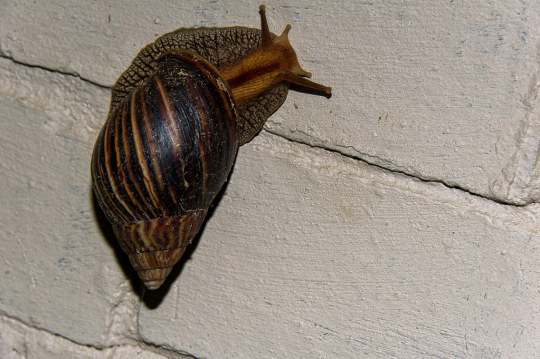
Giant african land snail by Steve Slater (used to be Wildlife Encounters) is licensed under CC BY 2.0 . Shell estimated to be 10-15cm (4-6 inches) long.
Or maybe today is opposite day and you are really asking about the smallest snail I have seen. Although I do know about a minute sea snail, Ammonicera minortalia, at 0.4 mm diameter reported to be the smallest snail in the United States (Bieler & Mikkelsen 1998), I have never seen one. If you mean land snails, I recall that Wenz (1938-1944) reported some land snails in the family Diplommatinidae to be 0.5 mm, although I have not seen any Diplommatinidae that small, and I wonder if Wenz was reporting shell diameter rather than maximum dimension (most Diplommatinidae are taller than wide). (On the subject of narrow snails, I have seen the minute Carychium nannodes, which is only 0.4 mm diameter, but it is about 1.4 mm tall.) I do know some tiny snails from east Asia got a lot of press a few years ago for being able to fit into the eye of a needle (Páll-Gergely et al. 2015), and at 0.8 mm in greatest dimension, they are certainly minute, but again, I have never seen one.
The smallest adult land snails I have seen are either Punctum minutissimum or Guppya sterkii, both on the order of 1 mm diameter. Of course, their babies are even smaller, and I have seen babies of both those species, especially of P. minutissimum. Amazingly, Punctum minutissimum appears to be one of the most abundant land snails in northeastern North America, but it is rarely noticed due to its minute size.

Punctum minutissimum. Shell 1 mm (1/25 inch) diameter.
To recap (and more directly answer your question), the largest snail shell I have seen is Syrinx aruanus, the largest land snail shell I have seen is one of the giant African land snails, the largest living land snail I have seen is Achatina fulica, and the smallest land snail I have seen is babies of Punctum minutissimum.
Timothy A. Pearce, PhD, is the head of the mollusks section at Carnegie Museum of Natural History. Museum employees are encouraged to blog about their unique experiences and knowledge gained from working at the museum.
References
Bieler, R. & Mikkelsen, P.M. 1998. Ammonicera in Florida: notes on the smallest living gastropod in the United States and comments on other species of Omalogyridae (Heterobranchia). The Nautilus 111(1): 1-12.
Houbrick, R.S. 1984. The giant creeper, Campanile symbolicum Iredale, an Australian relic marine snail. In: Eldredge N. & Stanley S.M. (eds.), Living Fossils. Casebooks in Earth Sciences. Springer-Verlag, New York.
Páll-Gergely, B., Hunyadi, A., Jochum, A. & Asami, T. 2015. Seven new hypselostomatid species from China, including some of the world’s smallest land snails (Gastropoda, Pulmonata, Orthurethra). ZooKeys 523: 31–62. doi: 10.3897/zookeys.523.6114.
Wenz, W. 1938-1944, Gastropoda, Teil 1, Allgemeiner Teil und Prosobranchia. In: Schindewolf, Handbuch der Palaozoologie, v. 6. Borntraeger, Berlin. vii + 1639 p.
#Carnegie Museum of Natural History#Largest Snail#Smallest Snail#Snails#Molllusks#Molluscs#MolluskMonday'
36 notes
·
View notes
Text
algae for lunch! - caracolus marginella marginella
#cottagecore#snail#snailcore#dirtcore#giant african land snail#giant snail#gastropod#invert#naturecore#petblr#gals#achatinidae#snails#goblincore#mollusk#snailsoftumblr#caracolus marginella#pleurodonte marginella#treesnail#exotic pet#fungus#mushrooms#forestcore#mushroomcore
7 notes
·
View notes
Photo

Este es un caracol gigante africano (Achatina fulica) de la familia Achatinidae. Es una especie considerada una gran plaga. Pueden durar muchos años. #Biología #Naturaleza
66 notes
·
View notes
Photo
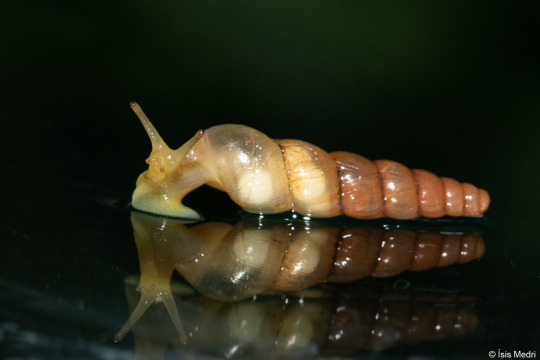
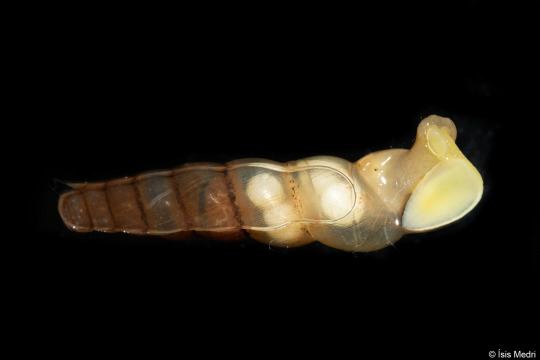

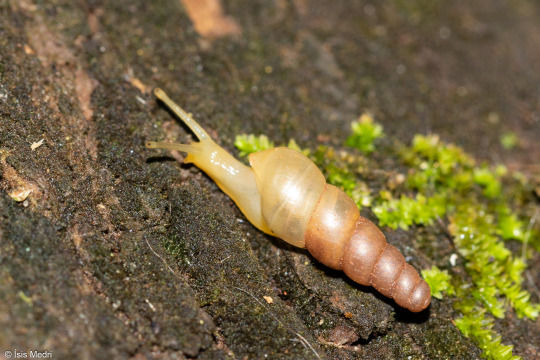

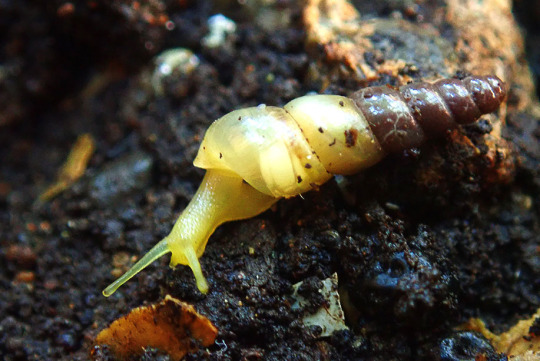
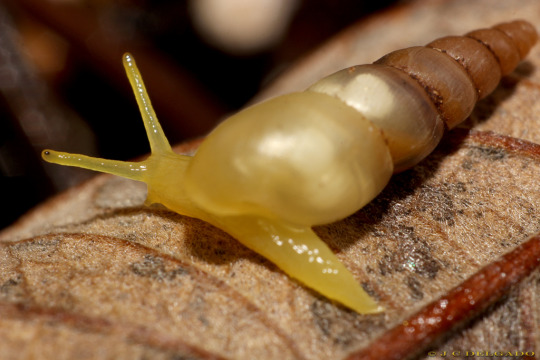
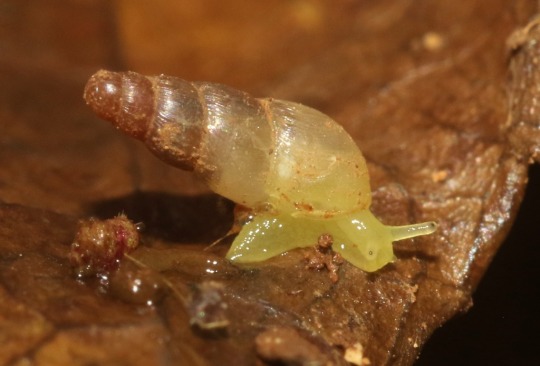
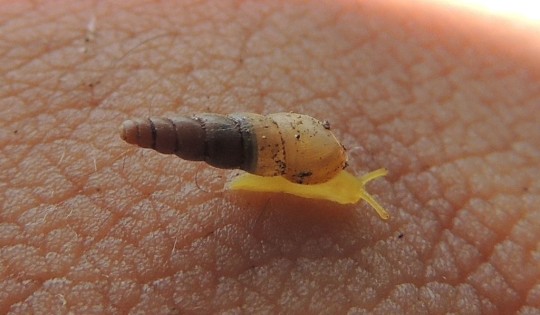

Miniature awlsnail, Subulina octona, Subulininae, Achatinidae
Native to the Caribbean, Cuba, and Venezuela, this species has been introduced to a wide range of other countries. It is considered an agricultural pest in some areas and is an intermediate host for rat lungworm, which is transmissble to humans.
Photos 1-5 by isismedri, 6 by czaldygarrote, 7 by juancdelgado, 8 by silversea_starsong, 9 by antonikon, and 10 by magichin
#animals#curators on tumblr#gastropods#mollusks#bugs#snail#land snail#miniature awlsnail#one nice bug#despite being non-native pests and parasite carriers#they are very cute :)
627 notes
·
View notes
Photo

Giant African Snail (Lissachatina fulica)
Upper Bukit Timah Road, 11th November 2017
This Giant African Snail appears to have been crushed while it was on the pavement. The yellow spheres are eggs; this individual was gravid.
The Biodiversity of Singapore
The Tide Chaser: Terrestrial & Freshwater Gastropods (Snails & Slugs) of Singapore
Global Invasive Species Database
Invasive Species Compendium
Restricted Genetic Variation in Populations of Achatina (Lissachatina) fulica outside of East Africa and the Indian Ocean Islands Points to the Indian Ocean Islands as the Earliest Known Common Source
The Spread of the Snail Achatina fulica to South China
The Giant African Snail: A Problem in Economic Malacology
Giant African Snails: A Foreign Threat to U.S Agriculture
National Invasive Species Information Centre
Terrestrial Mollusc Tool
New York Invasive Species Information
Reproductive Ecology of the Giant African Snail in South Florida: Implications for Eradication Programs
ARKive
Animal Diversity Web
PetSnails.co.uk
#giant African snail#giant African land snail#Achatina fulica#Lissachatina fulica#Achatinidae#Achatinoidea#snails#land snails#Pulmonata#pulmonates#Stylommatophora#Eupulmonata#Heterobranchia#gastropods#molluscs#Bukit Timah#urban wildlife#introduced species#invasive species#human activities#Monday Morgue
0 notes
Photo

#fun #enjoy #haveaniceday #diversao #fotografiadicas #fotografiadicasoficial #foto #photo #nofilter #photography #photographie #fotografia #nature #natureza #animal #clsmetalphoto #canon #hoya #sx50hs #omelhorclick #molusco #caramujoafricano #slug #mollusca #achatinidae #gastropoda #pulmonata #stylommatophora (em Sorocaba, Brazil)
#photo#photography#clsmetalphoto#foto#pulmonata#omelhorclick#slug#fotografia#molusco#diversao#hoya#sx50hs#fotografiadicasoficial#natureza#mollusca#canon#stylommatophora#achatinidae#photographie#nofilter#haveaniceday#caramujoafricano#animal#fotografiadicas#gastropoda#fun#nature#enjoy
0 notes
Text
Top 3 loại thuốc trừ ốc sên ở súp lơ được nhiều người tin dùng hiện nay
Top 3 loại thuốc trừ ốc sên ở súp lơ được nhiều người tin dùng hiện nay
Ốc sên ở súp lơ
Ốc sên thuộc họ Achatinidae có nhiều loại, là loài động vật thân mềm, vỏ to, dày sống ở nhiều nơi trên nước ta. Đầu có hai xúc tu,toàn thân liền trong vỏ bao bọc bởi một lớp nhầy. Chúng ưa thích sống trong những nơi ẩm ướt như tán lá, gốc cây. Thường sẽ hoạt động khi chiều tối và thời tiết ẩm ướt. Ốc sên gây hại trên súp lơ, đặc biệt là những phần lá non. Chúng thường cắn các phần…
View On WordPress
0 notes